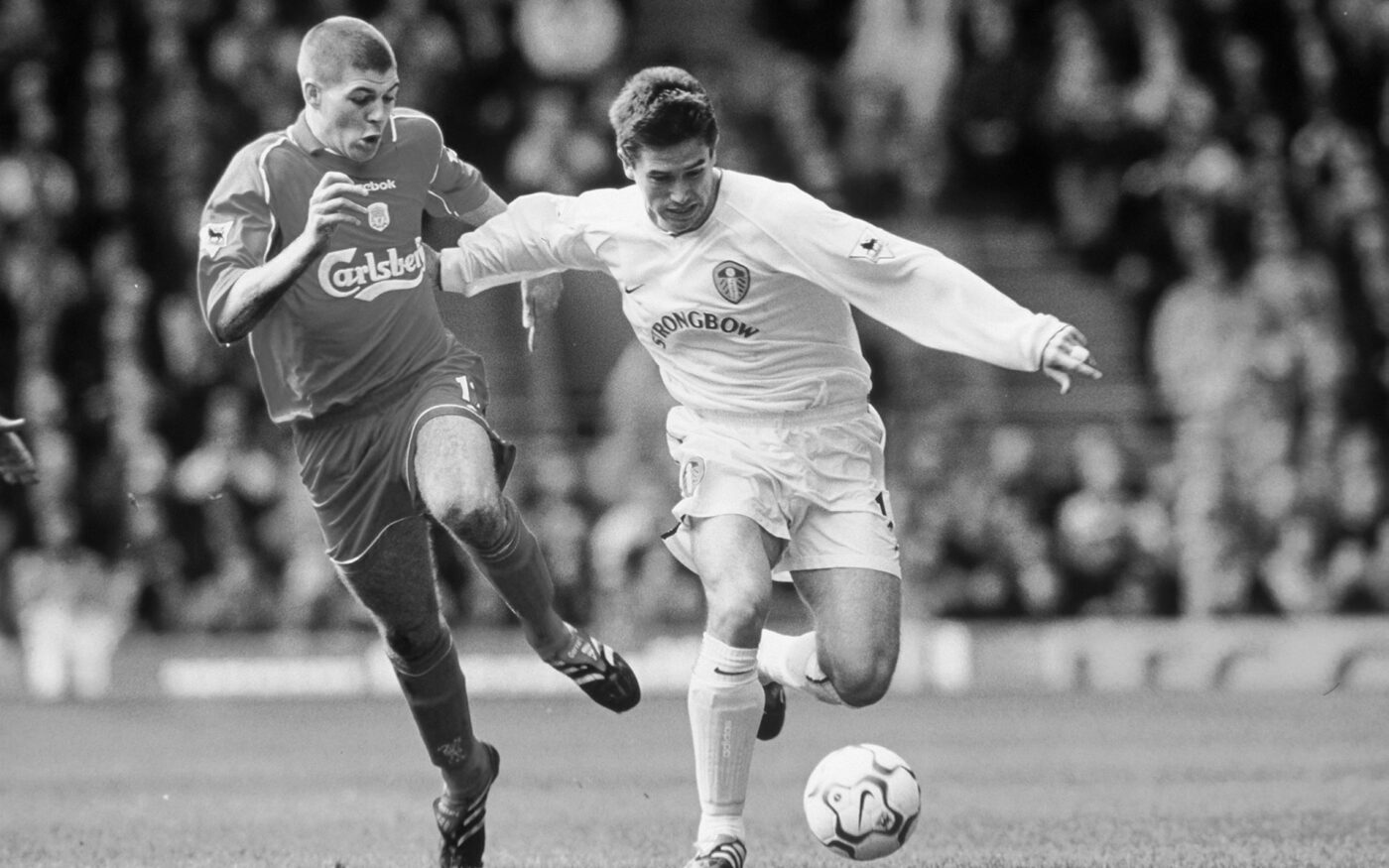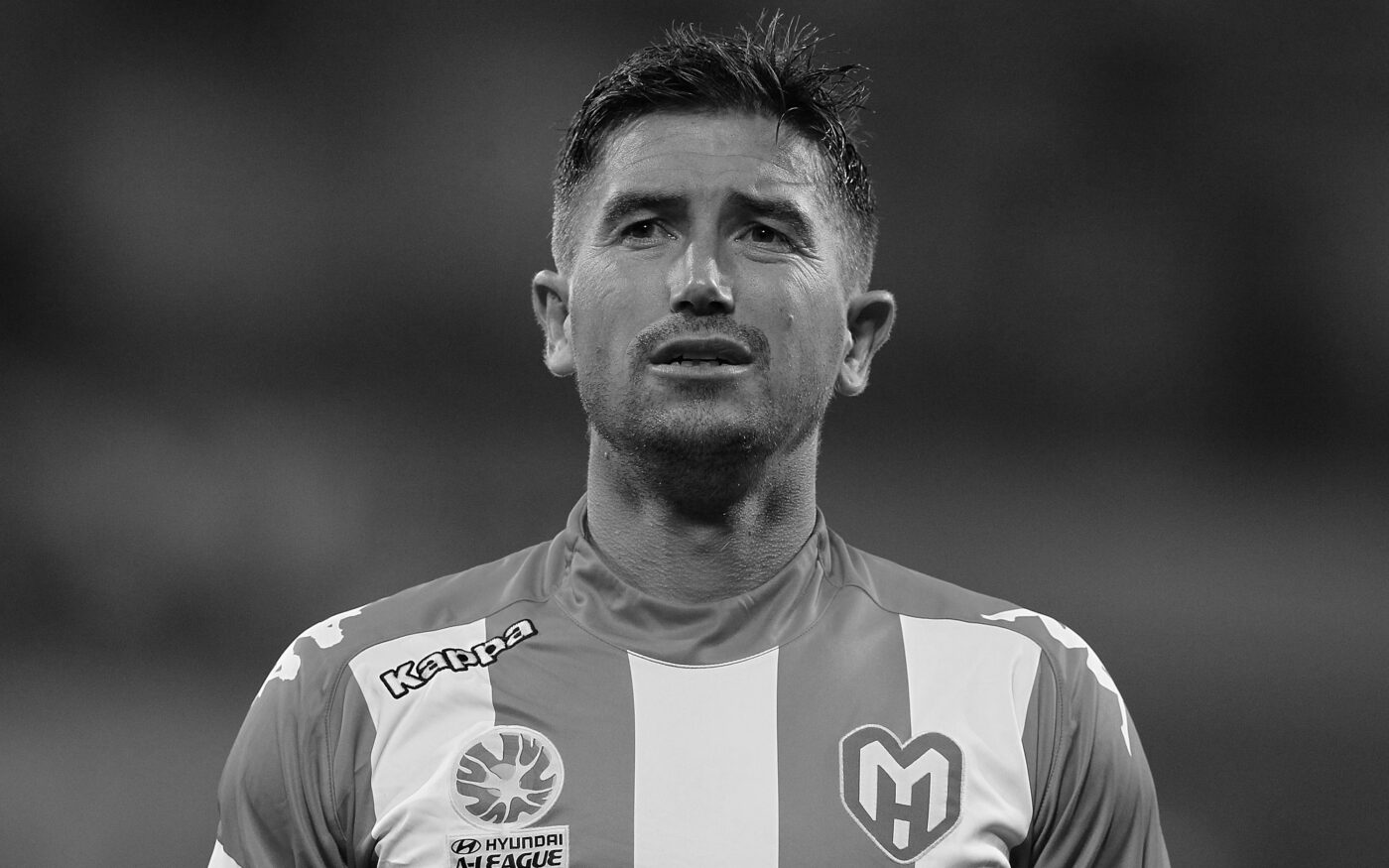
For Australian footballers, Joe Marston was a pioneer. Johnny Warren was a visionary. Harry Kewell was an inspiration.
“Harry inspired kids across the country, myself included,” Socceroos captain and PFA Executive Member Mile Jedinak says.
“He optimised the sacrifces and hard work you have to make,” Tim Cahill said of his fellow Socceroos legend.
He was in every sense a world class footballer.
“Between himself and Ryan Giggs, I think probably the best left-winger that probably played in England for a long, long time,” said his Leeds teammate Ian Harte.

His entrance into the Australian psyche was almost instant. At just 17 he became the Socceroos’ youngest ever debutant. A little over a year later he scored in a cauldron like atmosphere in Iran to give the Socceroos a vital draw in the first leg of their World Cup qualification play-off to silence 100,000 Iranians.
In the return match at the MCG he had seemingly sent Australia to the 1998 World Cup when he scored the opening goal.
The image of the young Kewell wheeling away to celebrate his strike will live long in the memory of all football fans. A moment of ecstasy before what would prove to be eventual heartbreak. From that point on he was a symbol of the rise of Australian football.
For Leeds United, the club he joined at just 15, he was a man in a hurry. He would make his debut at just 17, and by the time he was 21 he had been named by his peers in the PFA Team of the Season in the English Premier League and as the PFA Young Player of the Year in 2000.
He was central to the rise of the club. Alongside fellow Socceroos legend Mark Viduka, Kewell would lead the Yorkshire club on a remarkable run in the Champions League that would lead all the way to the Semi Finals.

His performances saw him constantly linked with Europe’s heavyweight clubs. Like Joe Marston and Craig Johnston before him, he showed the world just what the nation’s footballers were capable of.
In 2003 he would follow the path of Craig Johnston to Anfield to join the club he supported as a boy – Liverpool.
“We had spoken about bringing in players who would have the fans on the edge of their seats and I can’t think of a better description for the qualities that Harry will bring to Anfield,” then Liverpool Manager Gerard Houllier said at the time of securing his signature.
Handed the legendary number seven, Kewell carried the hopes of the Kop nation. Injuries would cruel much of his time at the club.
“My injuries were my biggest regret, I’d be lying if I said that thought (retirement) didn’t creep into my mind (at Liverpool),” Kewell said reflecting on the injuries he would battle with whilst at the club.

However, injury was not the whole story of his time with the club. In his five years on Merseyside he would emulate Johnston’s success, becoming just the second Australian to win the Champions League. The Premiership win he and the club so desperately craved would elude him but he would enjoy further success winning the FA Cup and UEFA Super Cup.
On the international stage he continued to carry a nation’s hopes, never weighed down by them, but rather embracing them. Just prior to his move to Liverpool he played a starring role as the Socceroos dismantled England in their own backyard. Like all the greats he was never content, he “always wanted more.”
The chance to end 32 years of heartbreak for Australian football would arrive just two years later in 2005. Faced with the team that had denied them in 2001 – Uruguay – the Socceroos would come into the second leg in Sydney 1-0 down on aggregate.
Hiddink would do the unthinkable for the match – drop Kewell. Hiddink’s assistant at the time, Graham Arnold, would reflect the sentiments of most Australian’s when they heard the news: “I was like: ‘Oh my god, if we don’t qualify, you’re (Hiddink) going to get killed, I’m moving back to Holland with you!”
Just 27 minutes into the match Kewell would join the action. He would shatter what the Uruguayan superstar Alvaro Recoba had labelled their ‘World Cup destiny.’ His introduction to the match changed it in an instant with the Socceroos levelling the tie almost immediately after coming on.
When the penalty shoot-out came he would lead the way. The result of the spot kick was never in doubt. “You don’t have the career he has had being a shrinking violet,” Craig Foster would say after it went in. When Aloisi sealed a place in the 2006 World Cup Kewell would savour the moment, standing still in the centre circle as pandamonium broke out around the stadium. He had waited a long time for this moment. “I was devastated (by the 1997 loss to Iran), but I wanted the next one to come around and I was adamant it wouldn’t happen again.”
Once again Kewell would be pivotal to the Socceroos fortunes at the World Cup – his fate and Australian football’s inextricably linked. With a place in the knock-out stages on the line, a Kewell strike would send the Socceroos through to an historic round of 16 clash, and Australia into a state of delirium. The image of Kewell celebrating his goal will forever live in the memory of all who watched the game.
After five years at Liverpool, Kewell joined Turkish giants Galatasaray. Three outstanding seasons would follow, with Kewell firmly establishing himself in the hearts of all Gala fans. Injury free he would score at a rate of almost a goal every three matches during his time in Istanbul.

His performances highlighted his mental toughness with the injuries he endured during his time at Liverpool having left him contemplating retirement. “I came close to quitting football a couple of times,” Kewell would later reflect on his fitness battles.
In 2010 huge expectation was once again placed on Kewell. His red card in the second group match was a hammer blow to the Socceroos’ hopes of progression out of their group at the 2010 World Cup. Later he would remark that the red card ‘killed’ his World Cup dream. It was equally true for many Australians.
Kewell was far from content to bow out on that note. He would lead the Socceroos to the final of the 2011 Asian Cup, scoring three times during the tournament. It is often said that football can be cruel and unfortunately the final would deny Kewell the silverware his international career so deserved.
In 2011 Melbourne Victory chairman Anthony Di Pietro would announce “we believe this is the biggest player signing in the history of Australian sport.” It was the news A-League fans across the country had been waiting for – Kewell was coming home to join the Victory.
On and off the pitch the hope was that he would inspire the competition to new heights. For the Socceroos legend the mission was simple. “I get the impression that some people think I’m here for a picnic. I’m here to play football.”
A family illness would cut short his time at the club to just one season, but his impact was clearly felt. Crowds soard and on the pitch he was true to his word making 25 appearances and scoring on eight occasions.

MELBOURNE, AUSTRALIA – JANUARY 31: Harry Kewell of the Heart looks on during the round 17 A-League match between Melbourne Heart and Sydney FC at AAMI Park on January 31, 2014 in Melbourne, Australia. (Photo by Graham Denholm/Getty Images)
After brief stint in Qatar, Melbourne Heart lured him back to the A-League. The ambition for Kewell seemed clear – the 2014 World Cup. Despite his almost 12 months out of the game few put it beyond him, even less wanted to.
For many he was still the face of the game. Ultimately it would prove a bridge too far and he would announce his retirement at the end of the season.
The curtain was brought down on a career that had included two World Cup Finals appearances, a UEFA Champions League win, an FA Cup win and countless individual honours. Such was his talent that even this array of honours does not seem enough.
Football matters. As Arthur Hopcraft notes in his outstanding book The Football Man, ‘it is inherent in its people.’ Kewell was the very best of us. He showed the country what we could be and what we should aspire to. He inspired a generation of young players, he was never burdened by carrying the hopes of the nation, he embraced the expectations. In every way he was the champion the game needed and the one we all wanted.








